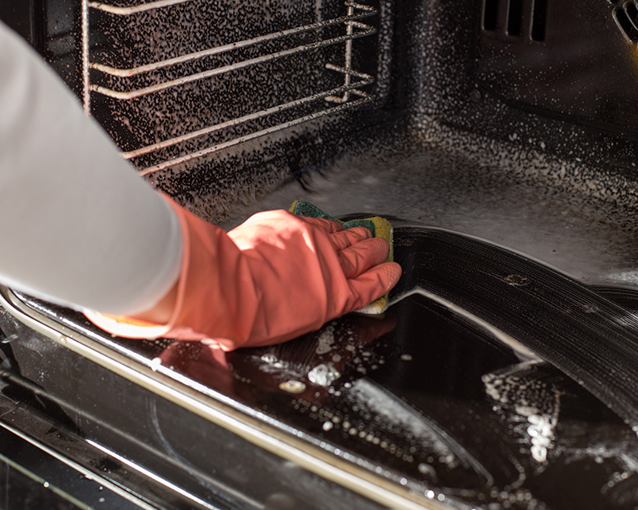
Our friends at Jones Services have put together this great guide to keeping your oven running it's best!
Your oven is the workhorse of your kitchen, helping you prepare delicious meals, day in and day out. In this blog post, courtesy of Jones Services, we'll provide you with valuable tips on how to keep your oven clean, working efficiently, and in turn, extend its life.
There are three steps to looking after your oven: regular checks, quick cleans and deep cleans.
1. Regular checks
Once a month do a quick check of your oven - look for signs of wear and tear, loose knobs, or uneven heating. If you notice any problems, address them promptly to prevent more significant issues in the future.
2. Quick cleans
As soon as possible after cooking, while your oven is still warm, give the interior a quick wipe with a damp cloth. This simple step will prevent grease building up over time.
3. Deep cleans
A regular deep clean is an essential part of looking after your oven - fortunately these days, most ovens have built-in technology to make this task so much easier for you!
There are three types of oven cleaning systems: Pyrolytic, Catalytic (or “Eco-Direct”) and Steam (or “Hydrolysis”).
Note: for any oven cleaning, make sure you wear protective gloves - even if you are using natural products.
- Pyrolytic Cleaning
If you are lucky enough to have an oven with a pyrolytic cleaning function, this is the easiest possible way to clean a dirty oven. Pyrolytic cleaning works by heating the oven to over 400C, which carbonises the grease. After the cleaning cycle has finished, you simply wipe away the residual dust with a damp cloth.
To pyrolytic clean:- Check your oven manual to find out which trays and racks need to be removed
- Clean the internal glass in your oven door with a damp cloth or spray-on glass cleaner. (This prevents stains burning into the glass).
- Shut the door and start the pyrolytic cleaning cycle. Note: the oven door will be locked throughout the process.
- Once the oven has finished the cleaning cycle and cooled down, wipe out any dust with a damp cloth.
- Catalytic (also known as “Eco Direct”) Cleaning
Catalytic ovens have surfaces coated with special liners which clean themselves during high heat cooking. Periodically your oven may warn you to run a high temperature cycle to assist this process. Refer to the oven manual for instructions, which usually involve removing accessories and running the oven at a high temperature for a short time. - Steam (also known as Hydrolysis or Vapour) Cleaning
Ovens with a steam cleaning function use water, either from an internal reservoir or added manually. The water is heated at a low temperature to soften burned-on grease, making it easier to wipe clean. To be effective, steam cleaning must be run on a regular basis.
Manual Cleaning
Sometimes it is necessary to manually clean your oven. We recommend where possible to use natural cleaning products - harsh scouring materials can scratch your oven and cause damage, making future cleaning even more difficult.
A very effective natural method is to mix baking soda and white vinegar into a paste and use a toothbrush to get to the hard to reach spaces such as under the grill. Leave this on for several hours or overnight, then remove with a damp cloth or plastic scraper for stubborn stains. Make sure you remove all the residue.
Cleaning oven accessories
Oven racks and trays also need cleaning - but here's some tips on how to make this quicker and easier for you:
- Remove what you don't use
Only keep racks and trays in the oven you know you need for cooking. Keeping excess accessories in the oven will result in poorer cooking results and unnecessarily cleaning. - Use these methods and recommended products
- Oven racks
We have had great success with a product called BarKeepers Friend, available online and in several stores. Simply run the oven racks under water until damp, sprinkle the powder over and leave for an hour. Brush off with a non-scratch scourer pad.
Alternatively you can fill your sink or a tub with enough very hot water to submerge your racks. Dissolve dishwasher powder or tablets in water, add your racks and leave for several hours. Scrub clean with a dishwashing brush. - Oven trays
Once you have finished cooking, pour boiling water into a tray immediately on removing food, and clean with detergent and water.
If you do have burned on grease on a tray, we recommend Selleys Heavy Duty Oven Gel which is a spot cleaner perfect for oven trays. Dab on to the offending area and leave for 20 minutes. Wash well after wiping away.
Note: Most good quality ovens have trays made with very high quality enamel which makes cleaning much easier.
- Oven racks
Commercial oven clean
If you have a really dirty oven and it seems like too much hard work to get it back “in shape”, consider hiring a commercial oven cleaner to do the job for you. Once you have a sparkling clean oven it is much easier to maintain it on a regular basis.
Enjoy your lovely clean oven!
Thanks to Jones Services, you now have the ultimate guide to keep your oven spotless and ready for all your cooking needs. Keeping your oven well maintained and cleaned will make a big difference to ensuring better quality cooking and will prolong the life of your appliance.
Need more help?
If you would like to get your oven checked or serviced by the experts, Jones Services has a “Appliance Maintenance Multi-check” which we offer to help ensure the longevity of your appliances. Give us a call to enquire today 0800 555 033.




